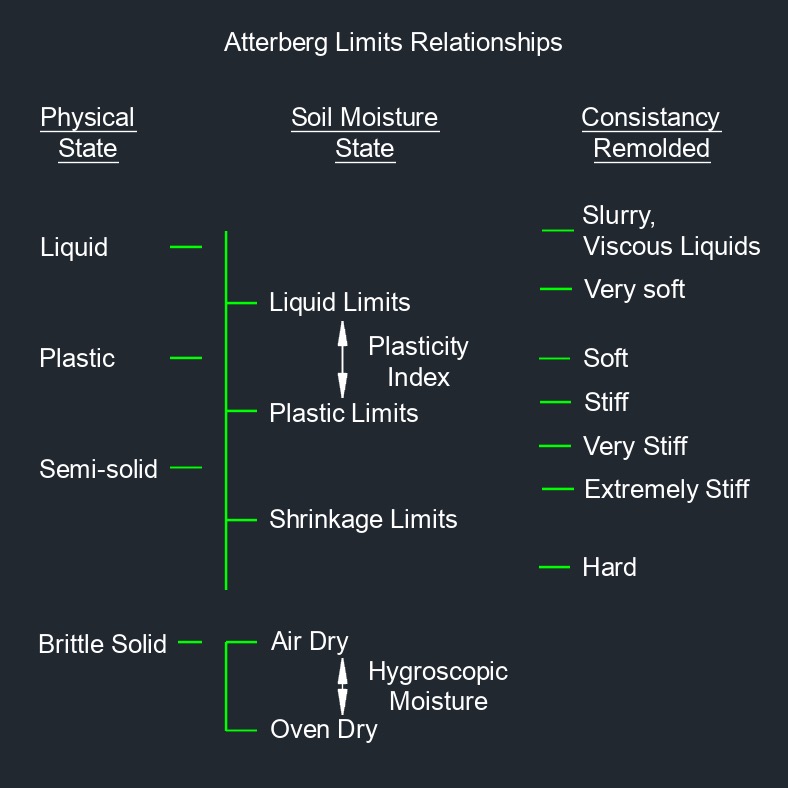Consistency Index Formula |
||
|
\( CI \;=\; \dfrac{ LL - w_n }{ PI }\) (Consistency Index) \( LL \;=\; w_n + CI \cdot PI \) \( w_n \;=\; LL - CI \cdot PI \) \( PI \;=\; \dfrac{ LL - w_n }{ CI }\) |
||
| Symbol | English | Metric |
| \( CI\) = consistency index | \(dimensionless\) | \(dimensionless\) |
| \( LL \) = liquid limit | \(dimensionless\) | \(dimensionless\) |
| \( w_n \) = natural water content (moisture content) | \(dimensionless\) | \(dimensionless\) |
| \( PI \) = plastic index | \(dimensionless\) | \(dimensionless\) |
 Consistency index, abbreviated as CI, also called Atterberg limit, a dimensionless number, is typically refers to a measure that assesses the relative hardness or softness of a soil and is used for soil classification. It helps engineers and geologists categorize soils based on their consistency, which is an important factor in construction, foundation design, and other geotechnical applications.
Consistency index, abbreviated as CI, also called Atterberg limit, a dimensionless number, is typically refers to a measure that assesses the relative hardness or softness of a soil and is used for soil classification. It helps engineers and geologists categorize soils based on their consistency, which is an important factor in construction, foundation design, and other geotechnical applications.
The soil consistency index is often determined using visual and tactile observations of the soil's behavior. It is commonly expressed using terms like "firm," "plastic," "sticky," "cohesive," or "granular" to describe the soil's consistency. The index helps provide a qualitative assessment of a soil's properties, which can be valuable in making decisions about construction methods and foundation design.
Unified Soil Classification System (USCS), Includes Several terms Related to Consistency
Cohesionless (Granular) Soils - These soils have low plasticity and are typically described using terms like "sandy" or "gravelly." They do not exhibit significant cohesion and are often used for foundations in certain construction projects.Cohesive (Fine-Grained) Soils - These soils have higher plasticity and can be further classified based on their consistency, ranging from "firm" to "soft" to "very soft." Terms like "clayey" or "silty" are often used to describe these soils. Cohesive soils can be problematic in construction due to their tendency to swell when wet and shrink when dry, which can affect foundations and structures.
Organic Soils - Soils with a high content of organic matter are generally described as "organic" and can have very soft to soft consistency. They are often compressible and may pose challenges in construction.
Peat Soils - Peat soils are a specific type of organic soil characterized by a high organic content. They are typically very soft and compressible and are often unsuitable for construction without significant modification.
